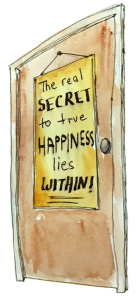Aside from choosing the right photographer, there are a number of specific things that you can do to support your photographer in doing his or her job really well. I interviewed the following four photographers* for this article and have included photos from each in the slideshow:
Cynthia DelConte
www.dayfornightproductions.com
cynthia@delcontephoto.com
Jean Kallina
www.hudsonvalleyphoto.com
jeankallina@gmail.com
Matt Gillis
www.mattgillis.com
matt@mattgillis.com
Roy Volkmann
www.volkmann-studio.com
info@volkmann-studio.com
[slideshow_deploy id=’893′]
The 2 biggest keys to success are:
• Relax, be natural and have fun. Remember that this is a day to enjoy being with your family and friends to celebrate your marriage. Smile, relax, enjoy, and don’t drink too much. Artificial smiles look artificial. If you tend to be nervous or particularly self-conscious, address that by doing whatever relaxes you best other than drugs or alcohol. Consider meditating, having a body or facial massage, a yoga class, or going for a run ahead of time.
• Get really great and professional hair and makeup. Even if you want a natural look, there is a specialized kind of makeup for photography. For example, you do not want makeup with mica in it because it makes you look sweaty. Be sure to do a test run for your hair and makeup and have pictures taken then to see if there is anything you want to change. Also, hire your hair and makeup people for the day of your wedding so they can do touch ups as needed. Be sure to ask your photographer for hair and makeup recommendations – they know who to use and who to avoid.
Here are the other great recommendations these photographers made:
• Create a timeline with your photographer. This is not the same thing as a timeline you set with your bridal consultant, location coordinator, or your hair and makeup people. The photographer’s timeline is specifically designed to ensure that you will get the balance you want between formal and informal shots and that you are being realistic about your preferences and priorities, and the tradeoffs that you are making. Keep your group portrait shots to a minimum and be very selective about your list of “must have shots.” Don’t over plan the photographer’s shots. Give your photographer the freedom to do what he or she does best – let the candid shots tell the real story of your wedding day. A great, experienced photographer knows how to schedule the day so it goes with ease and yields great pictures. Seek and follow your photographer’s advice.
• Consider the pros and cons of a first reveal.
Pros:
o If the ceremony is late in the day, then you have time to do all your family portraits outdoors earlier in the day and not miss your own cocktail hour when you would otherwise be doing these shots.
Cons:
o First reveal shots are always somewhat contrived – if the groom doesn’t look absolutely thrilled to see what the bride is wearing, the pictures may be unfortunate.
o You are likely to be taking your group pictures during the hottest part of the day in bad lighting.
o When group pictures are taken before the ceremony, everyone is likely to be wound up and not as relaxed as after the ceremony.
o A first reveal shot forfeits the thrill of that one moment when the bride walks down the aisle and everyone sees her for the first time. As an officiant, this is one of my personal favorite moments – watching the groom as his bride appears.
• Don’t forget about feeding your photographer and other vendors. Your photographer is constantly on duty and puts in a very long day. Schedule time and a comfortable place for your vendors to sit, relax, and have a meal – preferably at the same time as your guests are eating. Be good to your vendors and make sure that you are paying for and getting full plated meals for them from the venue.
• 2 considerations about getting ready pictures. If you want pictures of getting ready – have someone on hand to clean the room up so it doesn’t look chaotic and unsightly. Also, be realistic in terms of what you ask for and what you are paying for. For example, you can’t have shots of both parties getting ready without a second shooter.
• Avoid serving cocktails before the ceremony. Glasses and beer bottles inevitably end up in your ceremony pictures. Also, alcohol before the ceremony sends a mixed message by prematurely creating a party atmosphere.
• Have an unplugged wedding. Have someone make an announcement for your guests to turn off their cellphones before the wedding ceremony and to refrain from taking pictures during the event. You are spending big money on a professional photographer who is often blocked from capturing great shots because guests are holding phones in the air or sticking them out into the aisle. This means the photographer doesn’t get the shot, and instead gets a picture of the guests taking pictures.
• Do not use a stand-up microphone to amplify the couple and officiant. A stand-up mic can be an eyesore in an otherwise gorgeous shot. Besides being unattractive, it rarely gives satisfactory results. Most couples are nervous, few have any experience with how close they have to place their mouth to the mic, and there is no time to gracefully change the height of the mic as needed. All this adds up to awkwardness and uneven amplification at best. A far better solution is to have good quality lapel mics for the officiant and the groom.
• Anticipate potential problems your decorations might create. Sometimes, in an effort to make the ceremony site more interesting and festive, photographic challenges can be created. For example, I have often done battle with floral decorations on an arch that poked me in the head or face. These decorations can also cast shadows on the participants’ faces. The same can be true with a huppah. Large floral bouquets placed in front of the wedding party can block the view of guests or cut off great angles for the photographer.
• Take advantage of gorgeous lighting. The best natural lighting for pictures is when it is overcast, late afternoon, or at sunrise or a half hour before sunset – the golden hour. High noon casts shadows rather than light on faces. If the dinner hour happens to be when the sun is setting, consider taking some relaxed, reflective photos of the two of you at a distance just being together.
• Make sure your photographer and videographer coordinate. If you are going to have a videographer, ask your photographer for a recommendation. They know who they will be able to work most easily with and who they have had difficulties with in the past. Some videographers are unconscious of their effect on the photographer and can be fighting for the same pictures rather than knowing how to stay out of each other’s way. Videographers sometimes have cameras set up all over the place that interfere with the photographer’s ability to be in the moment trying to get the shot. As an officiant, I have been troubled by the lights some videographers shine directly in my eyes, preventing me from being able to make eye contact with the couple and guests.
The same issue applies if your DJ has people taking pictures to put up on screens. This might not only be a nuisance for your photographer but a violation of his or her contract as well. From a photographer’s point of view, DJ’s often bring cheap lighting, such as laser lights that cast little dots all over the faces of the couple and guests. This gives the photographer no choice but to shoot pictures in black and white only. Color lighting used by a videographer or DJ can be disastrous for the photographer as well. Magenta lighting, for example, makes people look like they are hemorrhaging. Ask your photographer and videographer to come up with a joint plan so both their needs can be met.
• Pacing of the processional and recessional is important. If you want your photographer to be able to get good shots of everyone coming up and down the aisle, a good rule of thumb is to have each person wait for the person or couple in front of them to pass the first or last row of guests before taking their turn.
• The larger your wedding party, the more important it is to have a rehearsal. The chaos and confusion that is apparent when there has not been a good rehearsal shows up in all your pictures.
• No one is invisible when the cameras are around. Here are some specific tidbits of advice:
o Stand up straight, be as natural as possible, smile, and be alert.
o Make sure no one is wearing transition lenses or sunglasses.
o Have bridesmaids all hold their flowers at belly button height.
o Give groomsmen specific directions of what to do with their hands (my personal favorite is behind their back – holding hands folded in front communicates sexual insecurity in non-verbal communication).
• Consider having ceremony pictures with and without the bridal bouquet. You spend a lot for your flowers, so it’s nice to have a few ceremony pictures with them. Just have the officiant cue you after the first or second ceremony segment to pass off your flowers so you and your partner can then hold hands.
• Have someone make a final check of the aisle just before the ceremony is about to begin. This allows for asking people to move anything they have in the aisle that will otherwise show up in all your pictures. If a wheelchair is needed for someone, be sure that during the ceremony it is not left near the aisle.
• Don’t use an aisle runner. They always wrinkle and only work if they look perfect and they are never perfect. Furthermore, most of them are white and stand out glaringly in your aisle shots.
• Foster direct communication between your vendors as needed. Be sensitive to the fact that there are politics and past experiences coloring the relationships among vendors. Some wedding planners do not allow direct communication between vendors. Everything must go through them. This can work against your best interests as wedding planners aren’t always knowledgeable or sensitive to all the considerations that affect a vendor’s ability to do a great job for you.
If you would like to know more about me and my work, please explore my website here.
Also, if you know anyone who might get value from this article please email or retweet it or share it on Facebook.






